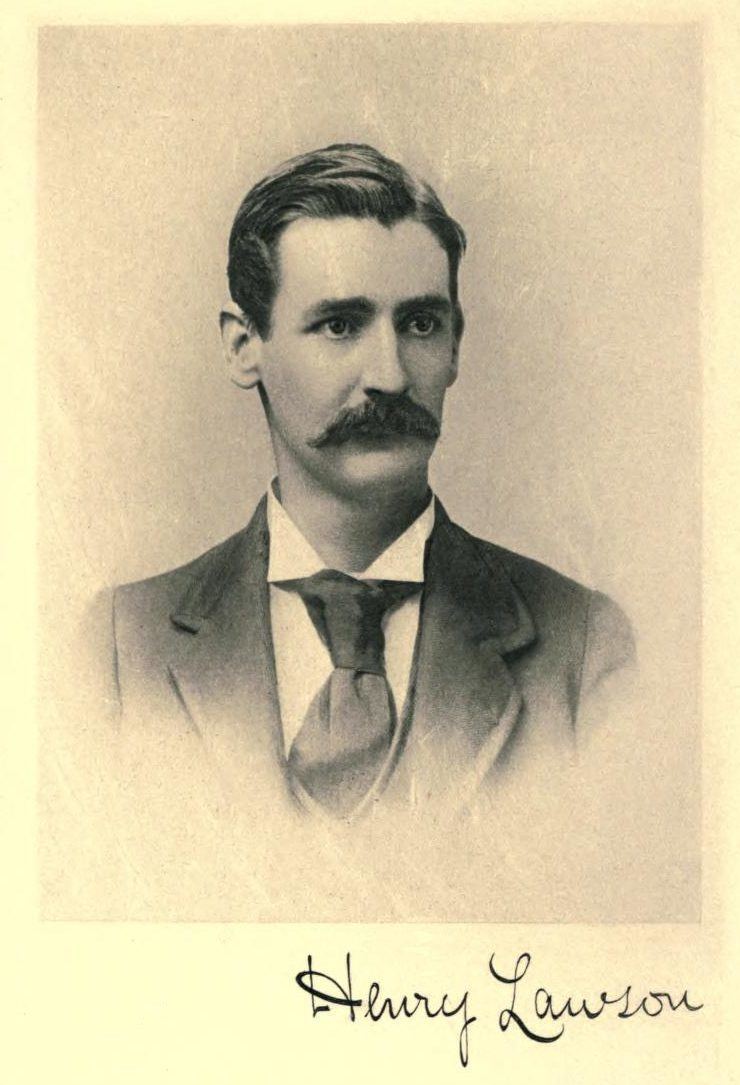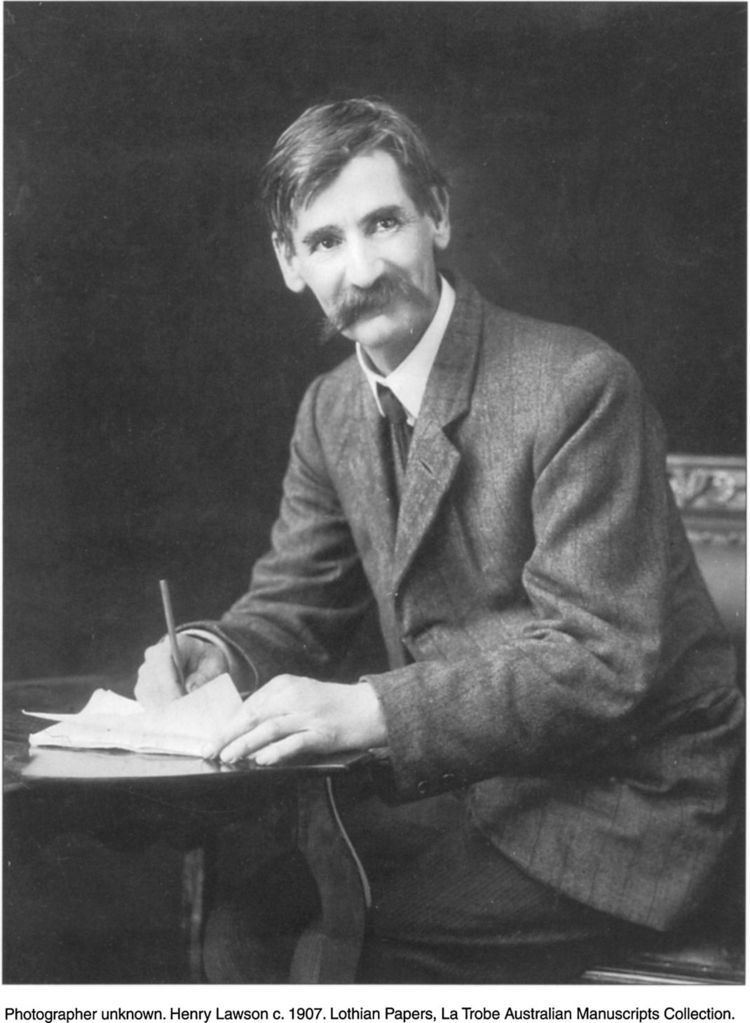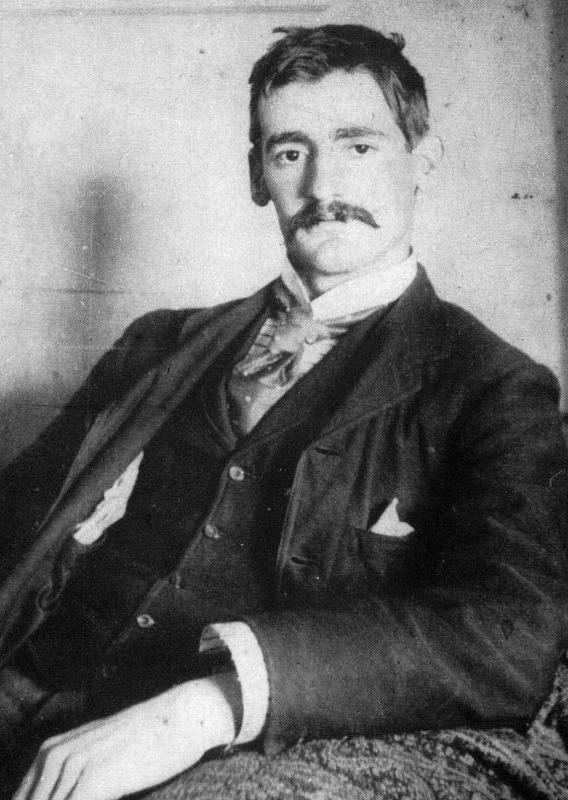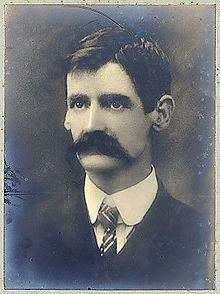Name Henry Lawson | Role Writer | |
 | ||
Occupation Author, poet, balladist Spouse(s) Bertha Marie Louise Bredt Children Bertha Lawson, Joseph Lawson Books The Loaded Dog, Poems of Henry Lawson, While the Billy Boils ‑ Best‑kno, Faces in the Street: Photogra, The Penguin Henry La Similar People | ||
Micro lesson 1 distinctively visual henry lawson
Henry Archibald Hertzberg Lawson (17 June 1867 – 2 September 1922) was an Australian writer and bush poet. Along with his contemporary Banjo Paterson, Lawson is among the best-known Australian poets and fiction writers of the colonial period and is often called Australia's "greatest short story writer". He was the son of the poet, publisher and feminist Louisa Lawson.
Contents
- Micro lesson 1 distinctively visual henry lawson
- The loaded dog henry lawson audiobook short story
- Early life
- Poetry and prose writing
- Later years
- Honours
- Popular poems short stories and sketches
- Recurring characters
- Lawson in popular culture
- References

The loaded dog henry lawson audiobook short story
Early life

Henry Lawson was born 17 June 1867 in a town on the Grenfell goldfields of New South Wales. His father was Niels Hertzberg Larsen, a Norwegian-born miner. Niels Larsen went to sea at 21 and arrived in Melbourne in 1855 to join the gold rush, along with partner William Henry John Slee. Lawson's parents met at the goldfields of Pipeclay (now Eurunderee, Gloucester County, New South Wales). Niels and Louisa Albury (1848–1920) married on 7 July 1866 when he was 32 and she 18. On Henry's birth, the family surname was Anglicised and Niels became Peter Lawson. The newly married couple were to have an unhappy marriage. Louisa, after family-raising, took a significant part in women's movements, and edited a women's paper called The Dawn (published May 1888 to July 1905). She also published her son's first volume, and around 1904 brought out a volume of her own, Dert and Do, a simple story of 18,000 words. In 1905 she collected and published her own verses, The Lonely Crossing and other Poems. Louisa likely had a strong influence on her son's literary work in its earliest days. Peter Lawson's grave (with headstone) is in the little private cemetery at Hartley Vale, New South Wales, a few minutes' walk behind what was Collitt's Inn.

Lawson attended school at Eurunderee from 2 October 1876 but suffered an ear infection at around this time. It left him with partial deafness and by the age of fourteen he had lost his hearing entirely. However, his master John Tierney was kind and did all he could for Lawson, who was quite shy. Lawson later attended a Catholic school at Mudgee, New South Wales around 8 km away; the master there, Mr Kevan, would teach Lawson about poetry. Lawson was a keen reader of Dickens and Marryat and novels such as Robbery Under Arms and For the Term of His Natural Life; an aunt had also given him a volume by Bret Harte. Reading became a major source of his education because, due to his deafness, he had trouble learning in the classroom.

In 1883, after working on building jobs with his father in the Blue Mountains, Lawson joined his mother in Sydney at her request. Louisa was then living with Henry's sister and brother. At this time, Lawson was working during the day and studying at night for his matriculation in the hopes of receiving a university education. However, he failed his exams. At around 20 years of age Lawson went to the eye and ear hospital in Melbourne but nothing could be done for his deafness.
In 1890 he began a relationship with Mary Gilmore. She writes of an unofficial engagement and Lawson's wish to marry her, but it was broken by his frequent absences from Sydney. The story of the relationship is told in Anne Brooksbank's play All My Love.
In 1896, Lawson married Bertha Bredt, Jr., daughter of Bertha Bredt, the prominent socialist. The marriage ended very unhappily. They had two children, son Jim (Joseph) and daughter Bertha.
Poetry and prose writing
Henry Lawson's first published poem was 'A Song of the Republic' which appeared in The Bulletin, 1 October 1887; his mother's republican friends were an influence. This was followed by 'The Wreck of the Derry Castle' and then 'Golden Gully.' Prefixed to the former poem was an editorial 'note:
Lawson was 20 years old, not 17.-
In 1890-1891 Lawson worked in Albany. He then received an offer to write for the Brisbane Boomerang in 1891, but he lasted only around 7–8 months as the Boomerang was soon in trouble. While in Brisbane he contributed to William Lane's Worker; he later angled for an editorial position with the similarly-named Worker of Sydney, but was unsuccessful. He returned to Sydney and continued to write for the Bulletin which, in 1892, paid for an inland trip where he experienced the harsh realities of drought-affected New South Wales. He also worked as a roustabout in the woolshed at Toorale Station. This resulted in his contributions to the Bulletin Debate and became a source for many of his stories in subsequent years. Elder writes of the trek Lawson took between Hungerford and Bourke as "the most important trek in Australian literary history" and says that "it confirmed all his prejudices about the Australian bush. Lawson had no romantic illusions about a 'rural idyll'." As Elder continues, his grim view of the outback was far removed from "the romantic idyll of brave horsemen and beautiful scenery depicted in the poetry of Banjo Paterson".
Lawson's most successful prose collection is While the Billy Boils, published in 1896. In it he "continued his assault on Paterson and the romantics, and in the process, virtually reinvented Australian realism". Elder writes that "he used short, sharp sentences, with language as raw as Ernest Hemingway or Raymond Carver. With sparse adjectives and honed-to-the-bone description, Lawson created a style and defined Australians: dryly laconic, passionately egalitarian and deeply humane." Most of his work focuses on the Australian bush, such as the desolate "Past Carin'", and is considered by some to be among the first accurate descriptions of Australian life as it was at the time. "The Drover's Wife" with its "heart-breaking depiction of bleakness and loneliness" is regarded as one of his finest short stories. It is regularly studied in schools and has often been adapted for film and theatre.
Lawson was a firm believer in the merits of the sketch story, commonly known simply as 'the sketch,' claiming that "the sketch story is best of all." Lawson's Jack Mitchell story, On The Edge Of A Plain, is often cited as one of the most accomplished examples of the sketch.
Like the majority of Australians, Lawson lived in a city, but had had plenty of experience in outback life, in fact, many of his stories reflected his experiences in real life. In Sydney in 1898 he was a prominent member of the Dawn and Dusk Club, a bohemian club of writer friends who met for drinks and conversation.
Later years
In 1903 he bought a room at Mrs Isabel Byers' Coffee Palace in North Sydney. This marked the beginning of a 20-year friendship between Mrs Byers and Lawson. Despite his position as the most celebrated Australian writer of the time, Lawson was deeply depressed and perpetually poor. He lacked money due to unfortunate royalty deals with publishers. His ex-wife repeatedly reported him for non-payment of child maintenance, resulting in gaol terms. He was gaoled at Darlinghurst Gaol for drunkenness and non-payment of child support, and recorded his experience in the haunting poem "One Hundred and Three" - his prison number - which was published in 1908. He refers to the prison as "Starvinghurst Gaol" because of the meagre rations given to the inmates.
At this time, Lawson became withdrawn, alcoholic, and unable to carry on the usual routine of life.
Mrs Byers (née Ward) was an excellent poet herself and although of modest education, had been writing vivid poetry since her teens in a similar style to Lawson's. Long separated from her husband and elderly, Mrs Byers was, at the time she met Lawson, a woman of independent means looking forward to retirement. Byers regarded Lawson as Australia's greatest living poet, and hoped to sustain him well enough to keep him writing. She negotiated on his behalf with publishers, helped to arrange contact with his children, contacted friends and supporters to help him financially, and assisted and nursed him through his mental and alcohol problems. She wrote countless letters on his behalf and knocked on any doors that could provide Henry with financial assistance or a publishing deal.
It was in Mrs Isabel Byers' home that Henry Lawson died, of cerebral hemorrhage, in Abbotsford, Sydney in 1922. He was given a state funeral. His death registration on the NSW Births, Deaths & Marriages index is ref. 10451/1922 and was recorded at the Petersham Registration District. It shows his parents as Peter and Louisa. His funeral was attended by the Prime Minister Billy Hughes and the (later) Premier of New South Wales, Jack Lang (who was the husband of Lawson's sister-in-law Hilda Bredt), as well as thousands of citizens. He is interred at Waverley Cemetery. Lawson was the first person to be granted a New South Wales state funeral (traditionally reserved for Governors, Chief Justices, etc.) on the grounds of having been a 'distinguished citizen'.
Honours
A bronze statue of Lawson accompanied by a swagman, a dog and a fencepost (reflecting his writing) stands in The Domain, Sydney. The Henry Lawson Memorial committee raised money through public donation to commission the statue by sculptor George Washington Lambert in 1927. The work was unveiled on 28 July 1931 by the Governor of New South Wales, Sir Philip Game.
In 1949 Lawson was the subject of an Australian postage stamp.
In 2017 Lawson was again featured on two Australian postage stamps, one featuring Mitchell: A Character Sketch and the other The Drover's Wife and family, including dog, pitted against the snake.
He was featured on the first (paper) Australian ten dollar note issued in 1966 when decimal currency was first introduced into Australia. Lawson was pictured against scenes from the town of Gulgong in NSW. This note was replaced by a polymer note in 1993; the polymer series had different people featured on the notes.
